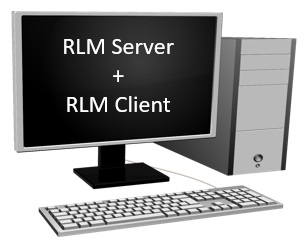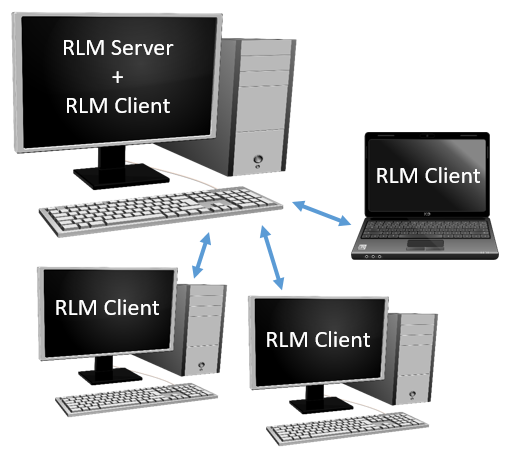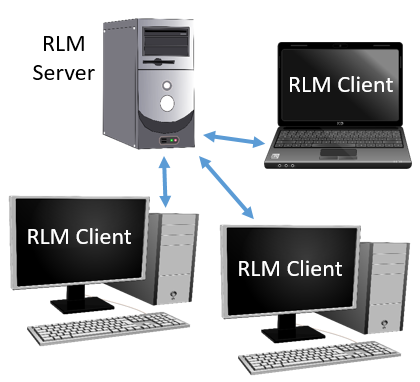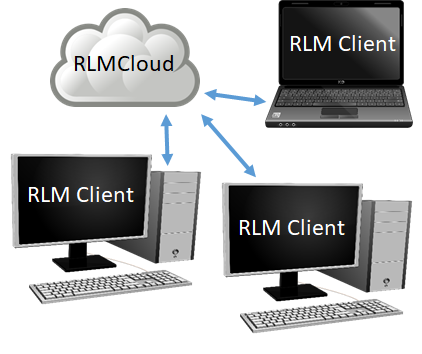Overview
In order to use Virtual Reactor, you must have a valid software license installed. In order to obtain a Virtual Reactor license, please contact CPFD Software.
Virtual Reactor uses a client-server model for licensing, meaning that your license(s) can be placed on one machine, which acts as a license server, and other machines on the same network can point to and request licenses from that server. The server may also use the license(s) that it hosts.
The licensing policy for Virtual Reactor is as follows*:
- Each solver license allows the user to run one instance of the Virtual Reactor solver. Optionally, add-ons to each solver license may be purchased to include Chemistry capabilities and/or Parallel computing capabilities.
- The number of Virtual Reactor solvers that can be run simultaneously is limited to the number of solver licenses that have been purchased.
- With any license, an unlimited number of Virtual Reactor Graphical User Interfaces (GUIs) can be open at the same time. This allows users to set up simulations, review previously set up models, and use all functions of the GUI.
- Running a single time step does not count against the number of Virtual Reactor solver licenses in use. This allows users to review a project setup at any time.
- An unlimited number of post-processing instances can be open at the same time.
- If Parallel add-on licenses have been purchased, Virtual Reactor can utilize NVIDIA GPU cards to increase calculation speed. The number of simulations that can use GPU acceleration simultaneously is limited to the number of Parallel add-on licenses purchased.
- If Chemistry add-on licenses have been purchased, Virtual Reactor can include user-specified chemical reactions in the simulation. The number of simulations that can solve chemistry simultaneously is limited to the number of chemistry add-on licenses that have been purchased.
- If Parallel and Chemistry add-on licenses have been purchased, Virtual Reactor can use multiple CPU cores for parallelization of volume-average chemistry to increase calculation speed. The number of simulations that can use CPU parallel acceleration simultaneously is limited to the number of Parallel add-on licenses purchased.
- The RLM license server must be run on a physical machine. A virtual machine (VM) cannot be used as the RLM license server host.*Parallelization is no longer offered as an optional add-on but is included with each license.
Plan the Client-Server Configuration
It is possible to configure RLM in several ways, depending on your needs and preferences. Virtual Reactor can use an on-premise RLM server, RLMCloud’s hosted cloud server, or a combination of the two. If you only have a single machine that will be running Virtual Reactor simulations, it may be most convenient to install the RLM server directly on that machine, so that it acts as both RLM server and RLM client:



Notes:
- When using an on-premise RLM server, the RLM server and all RLM client machines must be on the same network, or the network must be configured to allow all machines to see each other, in order for the Virtual Reactor licenses to work.
- An on-premise RLM server must be a physical machine. A virtual machine (VM) cannot be used as the RLM license server host.
Virtual Reactor also supports RLMCloud, an easy-to-use, cloud-based solution for serving RLM licenses. RLMCloud is hosted by Reprise Software. Advantages of using RLMCloud include:
- Users and system administrators do not need to configure and maintain an on-premise RLM server. Instead, a user-level RLMCloud license file is specified in the Virtual Reactor GUI license server manager, and Virtual Reactor is ready to run.
- RLMCloud is compatible with cloud-based computing platforms such as Amazon EC2, Microsoft Azure, and Google Cloud.
- With RLMCloud, increasing your Virtual Reactor license count or adding short-term licenses is a seamless and no-hassle process. CPFD, or your local in-country distributor, can quickly adjust licenses as needed, with no license administration burden for users.
- RLMCloud enables future licensing options such as on-demand overflow licensing capabilities. Contact us to learn more.
- RLMCloud includes a customer portal so that Virtual Reactor users have visibility into their license servers. This portal allows you to view current license server status as well as users of licenses, view and download server log files, and edit license server options.


